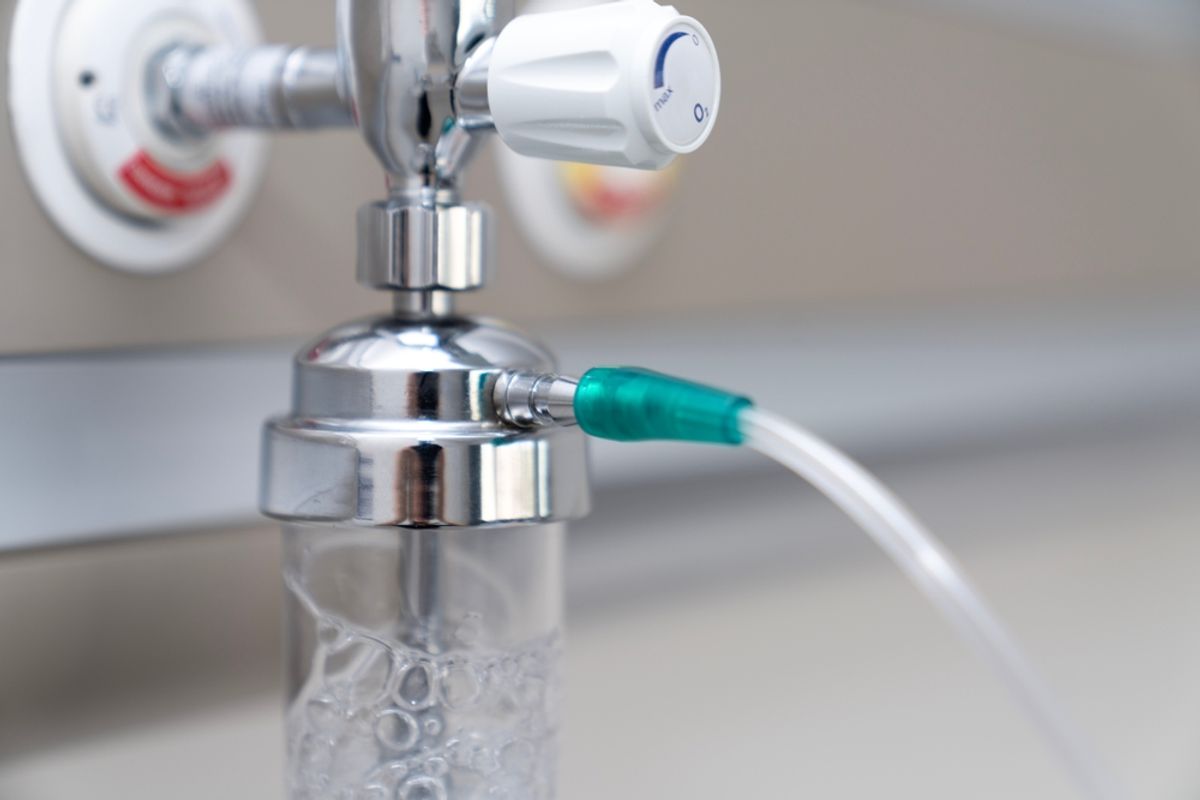A technique seemingly pulled from a comical science fiction story might soon become reality: butt breathing. What began as a project born of pure curiosity, even earning the satirical Ig Nobel Prize in 2024, which honors humorous scientific achievements, has evolved into a serious endeavor.
The method could one day help people who struggle to breathe through their lungs by delivering oxygen through the rectum.
Now, researchers from Japan have successfully demonstrated safety and tolerability in the first-ever human clinical trial, moving the concept of supplementing super-oxygenated liquid via an enema-like process closer to reality.
Read More: How Slow, Deep Breathing Taps Into a Natural Rhythm in Our Bodies
Alternative Ways to Delivering Oxygen
Visual abstract shows highlights of first human clinical trial to evaluate the safety of enteral ventilation concept developed by Takanori Takebe, MD, PhD, and colleagues.
(Image Credit: Cincinnati Children’s and the journal Med)
The concept isn’t a product of someone’s wild imagination but is actually inspired by nature. Bottom-dwelling loach fish have been observed swallowing air from the surface before traveling to low-oxygen environments. By doing so, they boost the oxygen they receive through their gills by also absorbing it through their guts.
There are also other sources of inspiration for enteral (intestinal) ventilation. The late Leland Clark, a biochemist and professor of pediatrics at Cincinnati Children’s Hospital, designed a liquid capable of holding large amounts of oxygen. Initially intended as a medium applied through veins, eventually became a compound used in clinics for liquid ventilation through the airways instead.
Scientists began to wonder: could this perfluorocarbon liquid, when administered rectally, provide an alternative way to deliver oxygen efficiently?
First Human Experiments Show Promise
The study that won the 2024 Ig Nobel Prize tested enteral ventilation using this oxygenated liquid on rodents and pigs, proving the concept feasible. The researchers’ motivation was partly driven by the severe shortage of ventilators and other breathing support during the height of the COVID-19 pandemic.
But before a promising idea can become clinical practice, its overall safety and efficacy in humans must be established. To that end, 27 participants received perfluorocarbon liquid rectally in various amounts (up to 50 oz) and were asked to hold it for one hour. Besides some reports of bloating and mild discomfort, no serious side effects were noted.
“This is the first human data, and the results are limited solely to demonstrating the safety of the procedure and not its effectiveness,” said senior study author Takanori Takebe from Osaka University, Japan, in a press statement. “But now that we have established tolerance, the next step will be to evaluate how effective the process is for delivering oxygen to the bloodstream.”
Fine-Tuning Butt Breathing for Hospital Care
If funding for this project continues, upcoming experiments will investigate how much oxygenated liquid is needed and the optimal duration of the procedure to achieve a measurable rise in blood oxygen levels.
The vision is to potentially use this low-tech approach in hospitals to support people with blocked airways or impaired lung function caused by injury, inflammation, or infection. Takebe and his team have even proposed using this technology to aid newborn care.
Research like this shows that when creativity is allowed to flow freely, even seemingly bizarre ideas can lead to real solutions for critical medical problems.
Read More: Dairy Products Saved the Lives of Oxygen-Starved Tibetans
Article Sources
Our writers at Discovermagazine.com use peer-reviewed studies and high-quality sources for our articles, and our editors review for scientific accuracy and editorial standards. Review the sources used below for this article:
